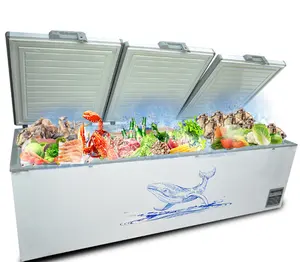Popular in your industry



























































































































































































Top categories
About american propane
Introduction
As the world grapples with the dual challenges of energy security and environmental sustainability, propane emerges as a compelling solution. This article delves into the multifaceted role of propane in the American energy landscape, from its origins and properties to its burgeoning production and diverse applications. We explore how propane, a clean-burning and efficient fuel, is shaping residential, commercial, and industrial sectors, and its potential in transportation. The environmental implications of propane usage, its comparison with other fossil fuels, and its intersection with renewable energy sources are also examined. Finally, we discuss how propane is paving the path towards American energy independence, considering policy, infrastructure, and economic implications.
Understanding Propane: Origin and Properties
Propane, a three-carbon alkane with the molecular formula C3H8, is a by-product of natural gas processing and petroleum refining. It's commonly used as a fuel in various applications due to its high energy density and clean-burning properties. Propane gas is a popular choice for outdoor appliances due to its ability to vaporize even in cold weather. Discovered in 1857, propane has become a vital part of the energy industry, offering a versatile and efficient energy source.
Propane Production in the United States
Propane production in the United States has seen significant growth, more than doubling in the last decade. This increase in supply has led to a surge in exports, contributing to a reduction in trade deficits. The primary source of propane is natural gas processing, although some is derived from crude oil refining. The rise in propane production has also led to expanded job opportunities in the industry, from production to transportation and retail sales.
Current State of Propane Usage
The Propane Market is expected to grow from 189.05 million tons in 2023 to 233.68 million tons by 2028, at a CAGR of 4.33%. The demand for propane from end-user industries, including commercial, transportation, and others, declined due to the COVID-19 pandemic. However, the increased demand for liquefied petroleum gas (LPG) from the residential sector propelled propane consumption globally. Factors such as the increasing demand from various end-user industries, such as industrial, construction, and petrochemical, are likely to drive market growth. Propane usage in power generation is expected to act as an opportunity for the market.
Propane as a Residential Energy Source
Propane is a vital energy source in many American homes, powering appliances like water heaters, furnaces, fireplaces, and grills. The amount of propane used daily varies based on factors such as weather, home insulation, and lifestyle. For instance, a well-insulated home with a highly efficient heating system may use less propane. On average, homes use about 1.5 gallons of propane a day for water heaters, while furnaces and boilers can burn up to one gallon of propane per hour. Propane fireplaces and stoves also contribute to the household propane consumption.
Propane in Commercial and Industrial Sectors
The manufacturing sector, particularly petrochemicals, consumes significant amounts of propane. It's used for on-demand heat in applications like soldering and metal melting, and aids in the production of plastic bags, rubber, nylon, etc. Many facilities also rely on propane for building heat or backup power, and as an eco-friendly coolant. In the transportation and logistics sector, propane is an eco-friendly and affordable choice for fleets and vehicles, including propane-powered forklifts common in warehouses.
Propane in Transportation
Propane-powered vehicles have been around for years, efficiently carrying out the heavy lifting of industry and transportation. Propane is common for vehicles like forklifts, buses, and recreational vehicles due to its clean-burning properties and high energy content. Propane's high octane rating prevents carbon build-up in engines, leading to longer engine life and fewer maintenance issues. However, the development of propane fueling stations has been a challenge, limiting the number of passenger cars running on propane. Despite this, a robust network of 'Autogas' dealers is emerging, improving propane fuel delivery technology.
Environmental Impact of Propane
Propane is an environmentally friendly fuel, both before and after combustion, leaving minimal impact on the environment. Although it's a fossil fuel, it burns cleanly, resulting in a reduced carbon footprint. Propane's efficiency is also noteworthy, as it delivers more British Thermal Units (BTUs) than natural gas, meaning it burns a smaller volume in an hour. These characteristics make propane a viable choice for those seeking a balance between energy efficiency and environmental consciousness.
Propane vs. Other Fossil Fuels
Propane and other fossil fuels like natural gas and oil share similarities, but also have distinct differences. Propane is more efficient than natural gas and oil, often cheaper, and burns cleaner, emitting fewer pollutants. However, natural gas is cheaper and more abundant, while oil is less flammable and easier to store. Both natural gas and oil are greenhouse gases and contribute to climate change. Propane's efficiency, cost-effectiveness, and lower environmental impact make it a compelling choice among fossil fuels.
Propane and Renewable Energy Sources
Renewable propane gas (RPG) is gaining traction in the renewable energy marketplace. The Propane Education & Research Council and the National Propane Gas Association are recognizing its potential, especially for fleet vehicles. The production of RPG can be accelerated using cellulosic sources, used cooking oil, animal tallow, and biodiesel byproducts. The blend rates of RPG offer an environmental advantage over other mass transportation fuels, including electricity. However, market availability of RPG remains a challenge, with strategies like direct shipments from manufacturing sources and RPG blending pools at wholesaler storage locations being explored.
The Path to Energy Independence with Propane
Propane users in America are declaring independence from dirty air and imported energy, supporting the production of a low-carbon, clean-burning fuel. The U.S. propane industry, composed of small, independent businesses, meets the unique energy needs of American communities. Propane production has more than doubled in the last decade, leading to more exports and reducing our trade deficits. Propane powers large swaths of the United States economy and provides clean, reliable energy so a variety of market sectors can flourish. The combination of a low-carbon, clean-burning fuel that powers our economy while providing employment and reducing our trade deficit is a win-win-win for the people of America and the businesses they work for.
Policy and Infrastructure Considerations
The Infrastructure Investment and Jobs Act and the Inflation Reduction Act have recognized propane as an emerging alternative fuel, providing incentives and funding for its use. However, these laws also offer significant subsidies for electrification, posing a challenge for propane. Despite this, propane has secured tax credits for autogas fuel and infrastructure, and incentives for renewable propane production. These policies, while not a complete victory, have opened up opportunities for propane in the clean energy economy, particularly in rural and disadvantaged areas.
Economic Implications
Propane, a domestically produced fuel, supports jobs and investment in the American economy from production to consumption. It helps reduce trade deficits and offers secure employment opportunities as industry careers can't be outsourced. Propane has an economic footprint in every state and congressional district in the country, employing 57,000 American workers and generating $46 billion in direct economic impact annually.
Conclusion
Propane's role in the American energy landscape is undeniably significant. Its high energy density, clean-burning properties, and versatility make it a vital fuel source across various sectors. The surge in propane production has not only bolstered the American economy but also contributed to energy independence and environmental sustainability. Despite challenges, the potential of renewable propane gas and supportive policies signal a promising future. As we navigate the complexities of the energy transition, propane stands as a testament to the possibility of balancing energy efficiency, environmental consciousness, and economic growth. The story of propane is a testament to American innovation and resilience, and its journey is far from over.









































